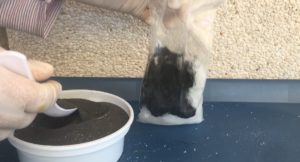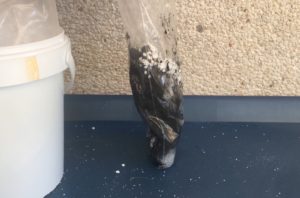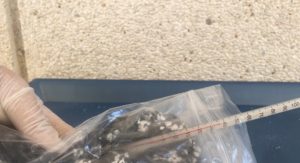If you've ever spent time outdoors with cold hands, chances are you've already used a hand warmer. If you want to find out the science behind these hand warmers, you can do so by doing this simple experiment where we are going to make a hand warmer. You will be able to see how the oxidation process of a metal can be used to provide heat.
MATERIALS FOR THE EXPERIMENT
- Polyacrylamide
- Iron powders
- Calcium Chloride
- Water
- Plastic bag
- Spoon
- Optionally you can use a beaker or plastic cup to make the mixture.
You will find all the materials at Alquera
EXPERIMENT MAKING A HAND WARMER STEP BY STEP
STEP 1. Put 2-3 tablespoons of polyacrylamide in the plastic bag. Then add a little water. The polyacrylamide absorbs the water and forms a cushiony substance.

STEP 3. In the same sachet insert 2 tablespoons of iron powder

STEP 4. Add 2.5 tablespoons of calcium chloride.

STEP 5. Mix all the substances and in a few seconds you will see how the temperature starts to rise. We measure it with a thermometer that reads 40º.
TECHNICAL EXPLANATION HAND WARMER
The chemistry behind this experiment is the solubility of calcium chloride in water, which itself is an exothermic reaction, also releasing chlorine, according to the following formula:
CaCl2+H2O->Ca(2+)+2Cl(-).
Increase H=82.8J
In addition, the released chlorine will oxidise the iron dusts, where heat is also released by the iron oxidation process.

There are hand warmer bags that are just a liquid and when you move a small plate inside them it starts to warm up. Can you do this at home?
https://www.youtube.com/watch?v=ruQyfCVccCs